Italian planes of World War II were indeed good aircrafts and they were well designed. From an aerodynamic point of view, they were probably better than their German counterparts, as they achieved superior performance and maneuverability with the same engines. However, there were three MASSIVE problems:
Conceptually, they were outdated. The success that the Fiat CR32 had achieved in Spain just a bunch months before the begining of WWII convinced the high command that the “winning” aircraft still was the more agile one, able to outmaneuver and quickly get on the tail of the opponent. Hence, biplanes were considered acceptable, as were lightly armed planes with no protection, because this would be compensated by the aircraft’s increased agility.
Obviously, they were wrong; times were changing rapidly, and while they were cheering for the victories of the CR32, they failed to notice (as the British did, for example) the BF109 and its successes.
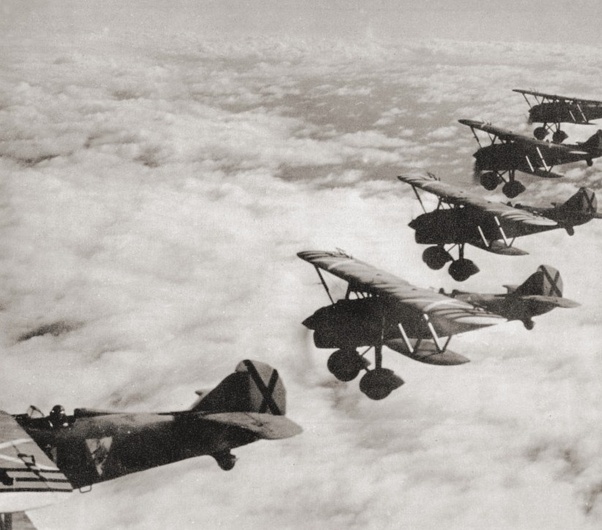
CR32 in Spain – Squadron “Cucaracha”. Note the tight formation.
The Italian Air Force invested significant funds in producing the “fighter of the future,” an improved version of the glorious CR32 with a more powerful engine and incredible performance.
The CR42 Falco. You heard that right: it’s mid-1938, and while the RAF is already receiving its first Spitfires from Supermarine, the Regia Aeronautica is commissioning hundreds of biplanes. The aircraft was out of place for its time, but in itself, it was exceptional—perhaps the best combat biplane of all time.
It reached very high speeds—for a biplane. It was also the last biplane to achieve an aerial victory in aviation history: on February 8, 1945, an unknown German pilot flying a night-fighter CR42 shot down a P-38 Lightning. Impressive, though perhaps less so considering that the P-38s that same night shot down four of those CR42s.
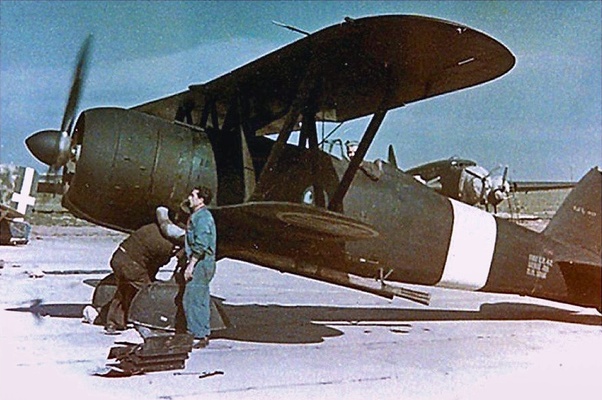
A CR42CN like the one who shot down the P-38 in 1945.
The times were changing, but innovations were delayed. This was not only due to the high command, but also the pilots themselves. Italian pilots were still flying in tight formations, as in World War I. They were well trained in close combat and “aerobatic flight”, with a somewhat romantic view of one vs. one duels, reminiscence of the “Red Baron” and “Francesco Baracca”.
They were not as skilled in teamwork and formation flying with a wingman. Another exemple: Macchi MC200 was probably the best fighter plane available to the Regia Aeronautica at the begining of the conflict.
Despite some issues, a well-trained pilot on board this plane could hold its own against an Hurricane. A MkI, of course, as with the later versions, it would have been shredded. It was designed with a closed canopy, but the pilots protested because it reduced visibility and, more importantly, they feared being trapped in case of a crash (!).
After all, why would be a canopy needed? At what altitude would you want to engage the enemy at… 8000 ft? Let’s be generous, 12000 ft? Just put a scarf on! Sure, right…–
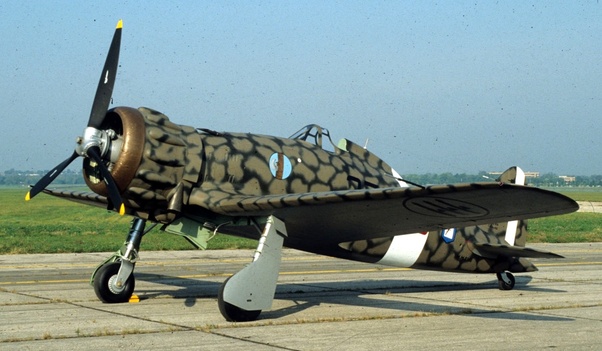
Macchi MC200
The high command was so strongly convinced that the biplane configuration was still valid that in 1941, when Alfa-Romeo began delivering the first DB601 engines under license, the first thing done was to mount it on a CR42, despite it having already shown its conceptual inferiority in Africa, the Aegean, and England.
Although it was aesthetically exceptional and made it the fastest biplane in history (and still is, by the way: 323 mph), who could have come up with such an idea?
Fortunately, someone also had the idea to mount it on a Macchi MC200 and noticed that it reached 375 mph, leading to the creation of the MC202.
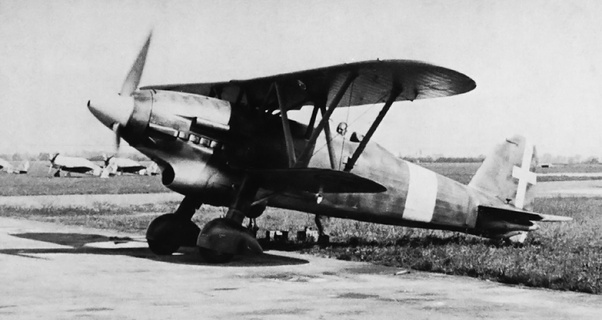
CR42DB
The engines were underpowered. Despite Fiat producing a monstrous 3100-horsepower engine in 1927, which allowed the Macchi-Castoldi MC.72 to reach the astounding speed of 442 mph (a seaplane speed record that still stands today), by 1939 the Italian industry still incredibly couldn’t produce a decent 1200-horsepower engine.
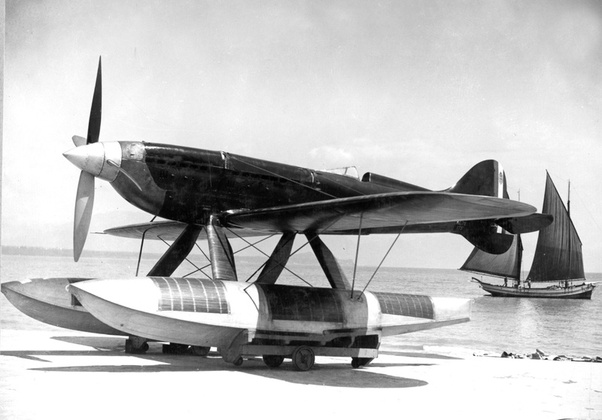
Macchi-Castoldi MC.72
Meanwhile, Supermarine and Rolls-Royce had taken notes during the Schneider Trophy. As a result, Italian fighters flew with modified Rolls-Royce Kestrel engines or, when lucky, licensed versions of Gnome-Rhône engines.
The standard fighter engine was the radial Fiat A74 (an improved version of the american Pratt & Witney Twin Wasp Junior) with 840 horsepower, and you could find it on most of the ‘first gen’ italian aircraft, like the CR42, the G50 and the MC200.
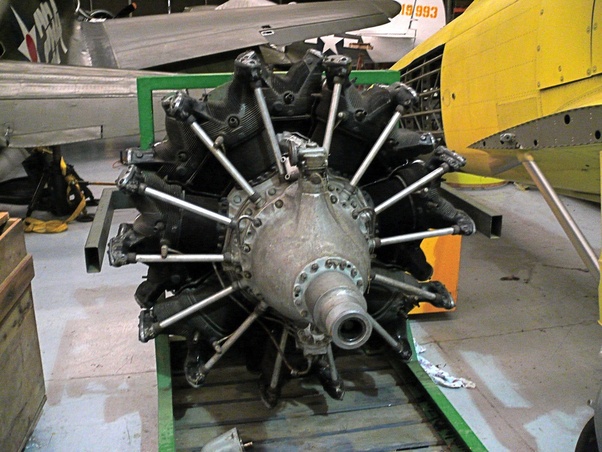
Clearly, with such pitiful power, if you wanted to intercept anything, you had to compromise on armament (and everything else). So, two 12.7mm Breda-Safat machine guns had to be enough, because with four it would have been difficult even to reach the enemy, even if it was a bomber.
Speaking of bombers, you probably noticed that the vast majority of Italian bombers had the peculiar feature of having three engines, a configuration that was far from common in military applications.
There is a very good reason why this configuration isn’t typically used: the propeller turbulence and the exhaust emissions from the nose-mounted engine interfere with the bomb’s drop, making high-altitude bombing significantly less accurate. Without that third engine, however, the aircraft’s performance wouldn’t have been sufficient.
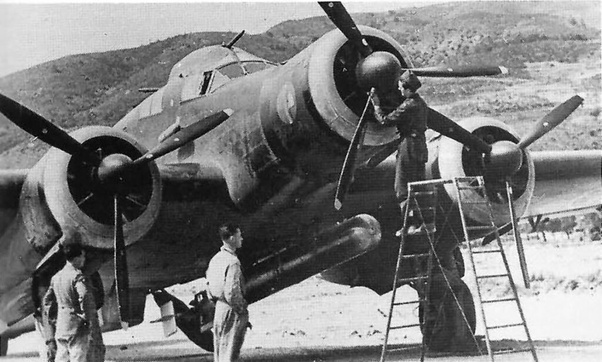
SM79 – Torpedo bomber variant
The engines problem was only resolved when German licenses for the production of the DB601 and DB605 engines arrived. These engines led to the creation of much higher-performance aircrafts that could compete on equal terms with the best planes of other belligerents.
They began to mount 20 mm cannons, and also the firepower became finally adequate. Thus, the famous “Serie 5” was born, consisting of the Macchi MC205 Veltro, the Fiat G55 Centauro, and Reggiane RE 2005 Sagittario.
All three were excellent aircraft, and to emphasize the quality of the initial design, they were all essentially direct derivatives of the older “Series 1” fighters, re-engined and with improved armament accordingly. Of course, these were produced in very limited numbers.
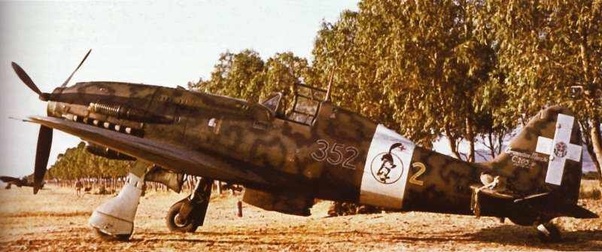
Macchi 205 Veltro, which was basically an MC200 with a 1475 hp DB605 engine and 2 additional 20 mm cannons. Definitely better.
The overall weakness of Italian industry, which could not guarantee a supply of aircraft and their upgrades remotely comparable to that of the Allies.
So in 1943, while the above-mentioned “Series 5” fighters were being delivered in dribs and drabs to a very few elite squadrons, the vast majority of other aircraft in service continued to be CR42s, Macchi 200-202s alongside some more modern Reggiane models.
However, they were no longer facing Gloster Gladiators and Wellingtons, but Mustangs and B-24s (which flew so high as to be virtually uncatchable).
The major modernization of the Air Force had taken place in the 1930s, leaving the country without money to invest in the 1940s, during a critical period of change in the world of aviation.
Additionally, the availability of resources was disastrous (even before the war, due to the embargo for invading Ethiopia), often forcing the use of wood and fabric coverings instead of aluminum.
The situation was so desperate that a large line of “austerity” prototypes (not to say “poverty” prototypes) was created, with objectively interesting engineering solutions like this extremely unknown SAI Ambrosini 207.
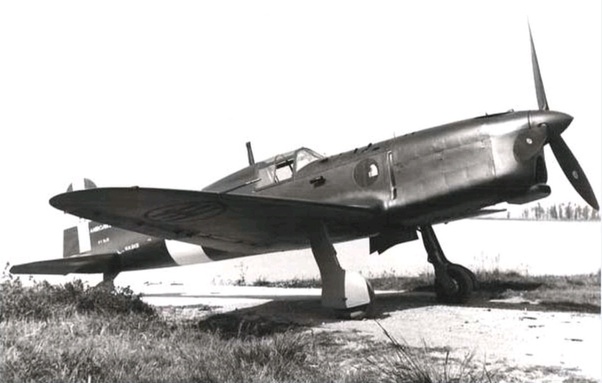
Produced in 1940 in only 12 units, it was an armed version of a racing plane from the ’30s equipped with a lame Isotta-Fraschini engine which could produce just 750 horsepower. Yet it reached the notable horizontal speed of 389 mph. In a dive, it reached 578 mph. How did it manage that? Well, aside from the engine, everything else was made of wood.
Another big problem, Italian aircraft were laborious to produce, precisely because they were so refined aerodynamically (and due to the low productivity of the Italian heavy industry).
For example, building a Macchi MC 200 required 20,000 man-hours, while constructing a BF109 E, which was arguably superior in every way a part for turnrate, took only 4,500 man-hours. Obviously, in the context of an already struggling industry, this figure is shocking.
Well, then this didn’t help either:
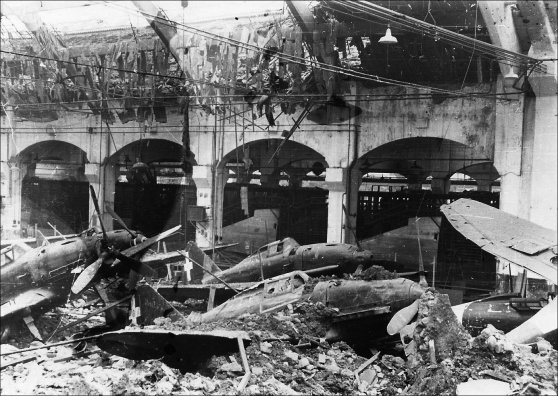
These are the Officine Meccaniche Reggiane after the 1944 bombing, with several wrecks of Reggiane RE 2001 aircraft visible. An urban legend claims that this was an American retaliatory bombing in response to the losses suffered by B-24 bombers in Ploiești, inflicted by a squadron flying a new aircraft, which was operating under Luftwaffe insignia.
This aircraft was the Reggiane RE 2005. Whether true or false (probably false), the Reggiane factory was no longer able to continue production, which was already at a minimum.
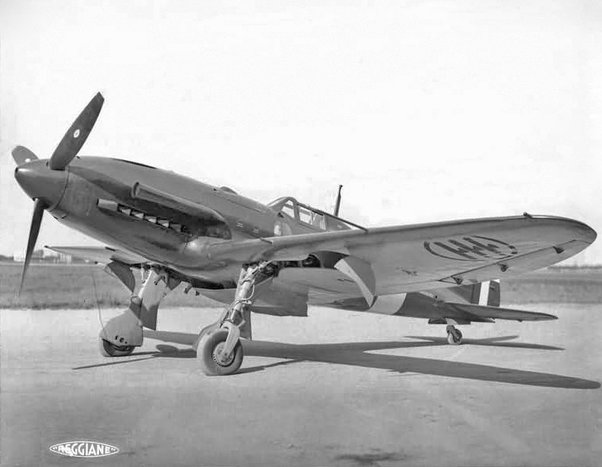
They got two massive problems:
- They were outdated, and
- They never made enough of the good ones
The Italians came out of the Spanish Civil War believing that there was still a future for biplane fighters, in opposition to everyone else (especially the Germans who came to the opposite conclusion). This was why they still made biplanes like the Fiat CR.42 all the way to the 1940s.
In fact, the CR.42 was even used during the Battle of Britain by the Italian contingent. You got to admit, you need a dangerously massive pair of balls to go up against Spitfires and Hurricanes in one of these:
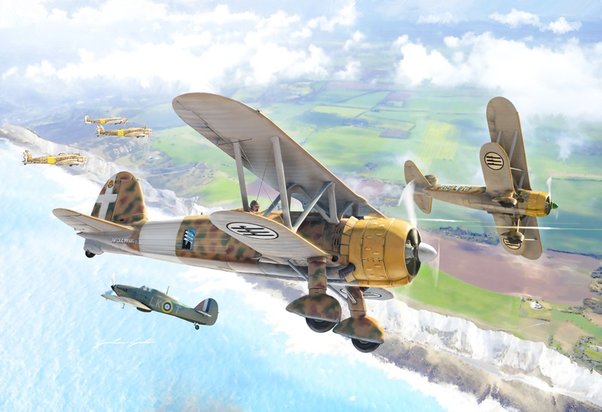
These biplanes have excellent maneuverability, however, they’re also very slow and can’t go much faster thanks to the massive drag from the strut assembly.
In terms of armament, they’re also on the lighter side with just 1x 7.7 mm and 1x 12.7 mm guns (compared to up to 8x .303 Browning on the Spitfire, which would later be upgraded with autocannons).
Because of their low speed, the biplanes are at a disadvantage in a fight. The faster monoplane could disengage and run away if they’re not in a good position, but the slower biplane would have to rely on the pilot’s skill and praying that the enemy would run out of fuel or ammo first. Their best success was on the Eastern Front, which is not saying a lot given how awful the Soviet air force was in the first year of the war.
The other problem is that the Italians didn’t have the same kind of industry like the other warring parties. For example, while they managed to develop the excellent Macchi C.202, they only made about 1,000 of them.
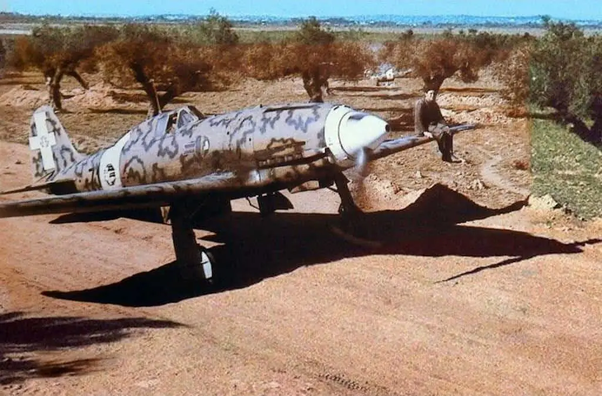
Compare that to the 10,000–30,000+ Spitfires, P-51s, or Bf-109 (each). Even with the best pilots operating under the best conditions, those 1,000 airplanes couldn’t do much. US factories made more airplanes in a month than Italy did in the entire war.
I would argue that they weren’t underrated in any way. Taken at the strategic level, they’re not that remarkable and had little impact during or after the war.






